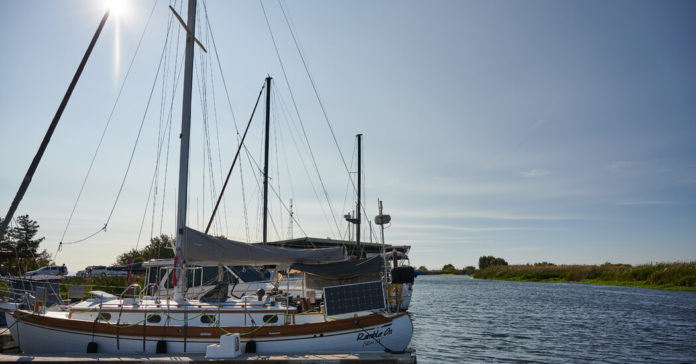
Dr. Peter Moyle, a professor emeritus at the University of California, Davis’s Department of Wildlife, Fish and Conservation Biology, has been studying the Delta for decades. Dr. Moyle has focused his research on the endangered Delta smelt and other fish of the Suisun Marsh, an area which, he said, “most resembles the original Delta.” He has no doubt that, whatever the path forward, major change is a given.
“The Delta is a very different system than it was 150 years ago, even 50 years ago. It’s going to keep changing,” he said. “What we’re living with now is a temporary condition, and people need to figure out what they really want the system to look like.”
There are infinite possibilities of what it could look like, from attempts to maintain the status quo as much as possible to a kind of eco-reclamation of open waterways and marshland. Everyone wants to save the Delta, but what version of the Delta deserves to be saved? And who does that Delta best serve?
Sailing into the Delta is a downwind dream; sailing out is an upwind slog. For the summer, we rented a slip in the Owl Harbor Marina on Twitchell Island (which, according to Dr. Moyle, may well be underwater in the coming decades). On a blazingly hot Friday evening in July, after we drove up for a weekend on the water, we sat in the boat’s cockpit as the sun set and the wind picked up, the sky glowing orange; it had been 110 degrees that day and promised to be even hotter the next. We watched a pair of swallows fret over our proximity to their nest, constructed precariously below one of our boat’s solar panels. The birds seemed to be arguing about the best way to proceed.
“What a dangerous place for a nest,” we thought, discussing the likelihood that their eggs would hatch before we sailed away, hoping that they would make it in spite of their questionable choice of a home.
When we came back a couple of weeks later, the temperature had dropped, the nest was empty and the swallows were gone. We carefully navigated out the narrow channel, avoiding shallow patches and sea grass, passing long-abandoned, half-sunk boats surrounded by invasive water hyacinth and then, so were we.
Follow New York Times Travel on Instagram, Twitter and Facebook. And sign up for our weekly Travel Dispatch newsletter to receive expert tips on traveling smarter and inspiration for your next vacation. Dreaming up a future getaway or just armchair traveling? Check out our 52 Places list for 2021.








